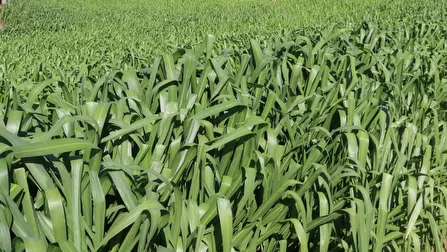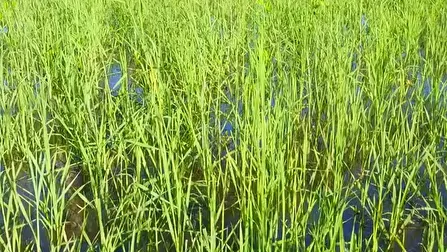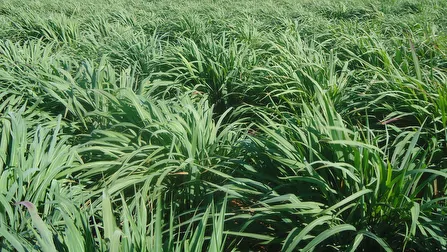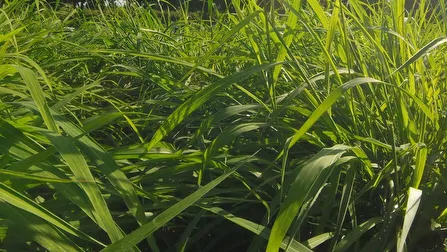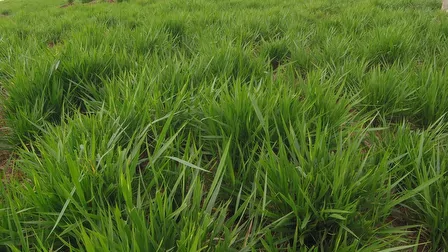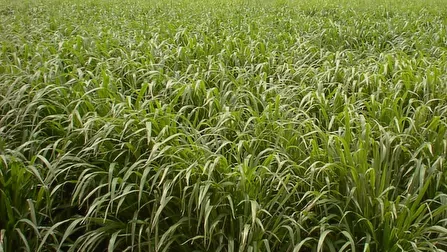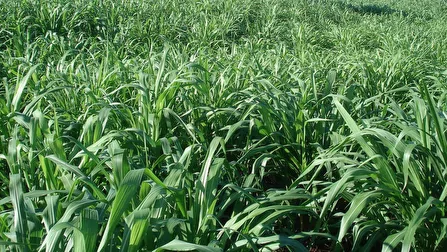
Indicação
É o primeiro híbrido de capim elefante propagado por sementes. Cultivar com alto potencial de produção de forragem (até 50 t/ha/ano de M.S.). Indicado para solos de alta fertilidade, corrigidos e adubados. É Recomendado para bovinos, equinos, caprinos e ovinos, cortado e fornecido in natura ou na forma de silagem. Pode também ser utilizado em pastejo direto. É opção na produção de biomassa para produção de energia termoelétrica ou para produzir calor em secadores de grãos.
Pennisetum glaucum x Pennisetum purpureum
Alta fertilidade e adubados
Pastejo direto, silagem ou picado "in natura"
30 a 50 t/ha/ano de matéria seca (M.S.)
8 a 18%
Até 3,0m
Excelente
Excelente
Média
Alta
Perene
Origem
Híbrido forrageiro originário do cruzamento artificial entre o milheto (mãe) e o capim elefante comum (pai). Este cruzamento foi realizado na década de 90 na Universidade de Georgia pelo Dr. Hanna.
Características Agronômicas
Foi o primeiro cultivar de capim elefante a ser multiplicado por sementes. Isso facilitou o estabelecimento desta espécie forrageira, que até então era feito apenas por mudas.
Utilização e Manejo
Os cortes no capim elefante Paraíso devem iniciar quando as plantas estiverem bem estabelecidas, com um bom desenvolvimento do sistema radicular, isso deverá ocorrer cerca de 90 a 100 dias depois da germinação das sementes. Depois deste primeiro corte é importante a adubação de manutenção, ou seja, a aplicação de pelo menos 80 kg/ha de nitrogênio e 160 kg/ha de KCl a cada 20 t de forragem verde produzida. Esta adubação deverá ocorrer durante o período chuvoso. Após este primeiro corte os seguintes serão realizados em intervalos de 70 dias aproximadamente. Estes cortes dependem exclusivamente do fator climático (luz, temperatura e água). A adubação de manutenção / cobertura poderá ser dividida a cada corte.
Características Morfológicas
Espécie forrageira de porte alto, podendo atingir acima de 3,5 m de altura, com colmos eretos, dispostos em touceiras abertas ou não, possui rizomas curtos, folhas verde-escuras, com 30 cm a 110 cm de comprimento por 3 a 10 cm de largura.
